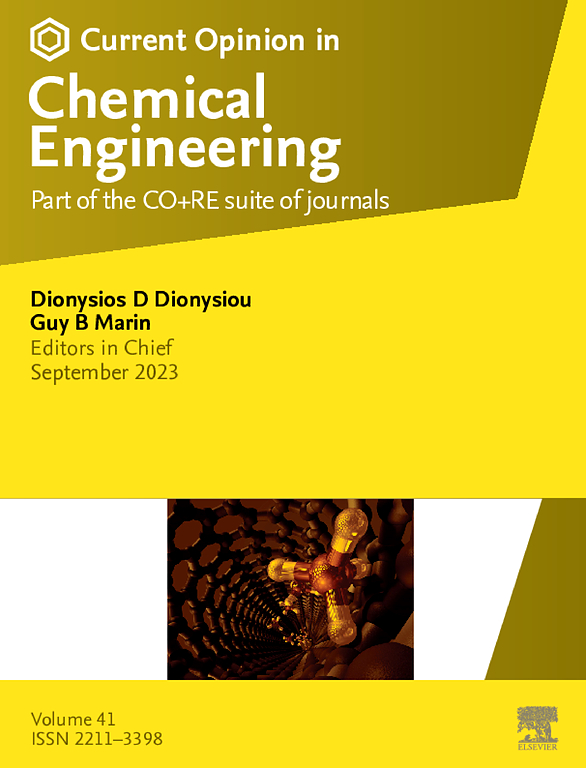Perspective in the industrial applications of sonoelectrochemical hydrogen production
IF 6.8
2区 工程技术
Q1 BIOTECHNOLOGY & APPLIED MICROBIOLOGY
引用次数: 0
Abstract
Sonoelectrochemistry is the incorporation of power ultrasound in electrochemistry. The use of ultrasound in electrochemical processes such as water electrolysis can lead to an energy efficiency enhancement in the range of 2–25% in low-temperature water electrolysers (LT-WE). However, this improvement greatly depends upon several factors such as the cell reactor design, the ultrasonic frequency, the transmitted acoustic power, and the distance between the ultrasonic transducer and the electrode. The main objectives of this review are to highlight recent advancements in using power ultrasound in water electrolysis and shed some light on possible commercial development by addressing the fundamental obstacles that lie in this technology. Several research works have highlighted that the efficiency improvement in ultrasound-aided water electrolysis is principally due to the gas bubble removal from the electrode surface, which ultimately reduces the ohmic resistance of the electrolytic cell. However, even with the observed higher efficiencies from the sonoelectrolysers for hydrogen production in R&D labs, this technology still faces challenges for further development due to the efficiency in competing with commercial LT-WEs, which are already in the range of 60–70%. If sonoelectrolysers are to succeed for commercial development and large-scale industrial applications, they would need to achieve overall efficiency much higher than current commercial LT-WEs.
超声电化学制氢工业应用展望
超声电化学是功率超声在电化学中的结合。在电解水等电化学过程中使用超声波可使低温水电解槽(LT-WE)的能源效率提高2-25%。然而,这种改进很大程度上取决于几个因素,如电池反应器设计、超声波频率、传输声功率以及超声波换能器与电极之间的距离。本综述的主要目的是强调功率超声在水电解中的最新进展,并通过解决存在于该技术中的基本障碍来阐明可能的商业发展。一些研究工作强调,超声波辅助电解效率的提高主要是由于电极表面的气泡被去除,从而最终降低了电解池的欧姆电阻。然而,即使在研发实验室中观察到用于制氢的声波电解槽效率更高,由于与商用LT-WEs的效率竞争,该技术仍然面临进一步发展的挑战,后者的效率已经在60-70%的范围内。如果超声电解槽要在商业开发和大规模工业应用中取得成功,它们需要实现比目前商用LT-WEs高得多的整体效率。
本文章由计算机程序翻译,如有差异,请以英文原文为准。
求助全文
约1分钟内获得全文
求助全文
来源期刊

Current Opinion in Chemical Engineering
BIOTECHNOLOGY & APPLIED MICROBIOLOGYENGINE-ENGINEERING, CHEMICAL
CiteScore
12.80
自引率
3.00%
发文量
114
期刊介绍:
Current Opinion in Chemical Engineering is devoted to bringing forth short and focused review articles written by experts on current advances in different areas of chemical engineering. Only invited review articles will be published.
The goals of each review article in Current Opinion in Chemical Engineering are:
1. To acquaint the reader/researcher with the most important recent papers in the given topic.
2. To provide the reader with the views/opinions of the expert in each topic.
The reviews are short (about 2500 words or 5-10 printed pages with figures) and serve as an invaluable source of information for researchers, teachers, professionals and students. The reviews also aim to stimulate exchange of ideas among experts.
Themed sections:
Each review will focus on particular aspects of one of the following themed sections of chemical engineering:
1. Nanotechnology
2. Energy and environmental engineering
3. Biotechnology and bioprocess engineering
4. Biological engineering (covering tissue engineering, regenerative medicine, drug delivery)
5. Separation engineering (covering membrane technologies, adsorbents, desalination, distillation etc.)
6. Materials engineering (covering biomaterials, inorganic especially ceramic materials, nanostructured materials).
7. Process systems engineering
8. Reaction engineering and catalysis.
 求助内容:
求助内容: 应助结果提醒方式:
应助结果提醒方式:


